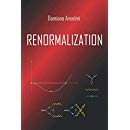Theories with purely virtual particles (fakeons) do not possess a classical action in the strict sense, but rather a “classicized” one, obtained by integrating out the fake particles at tree level. Although this procedure generates nonlocal interactions, we show that the resulting classicized equations of motion are not burdened with the need to specify infinitely many initial conditions. The reason is the inherent link between the fakeonic system and the parent higher-derivative local system: the solution space of the former is an appropriate subspace of solutions of the latter. A somewhat unexpected proviso is that, in order to avoid overcounting, the fakeon prescription must be obtained as a limit or special case of a more generic prescription. Ultimately, the number of degrees of freedom matches physical expectations, the extra ones (ghosts or otherwise) being removed by rendering them purely virtual. We illustrate the counting in simple linear solvable models and provide the general proof. Along similar lines, we analyze Dirac’s removal of runaway solutions in classical electrodynamics.
In the context of field theories with complex poles, we scrutinize four inequivalent ways of defining the scattering amplitudes, each forfeiting one or more tenets of standard quantum field theory while preserving the others: (i) a textbook Wick rotation by analytic continuation of the external momenta from Euclidean to Lorentzian signature (no optical theorem), (ii) the Lee–Wick–Nakanishi prescription, integrating along a certain contour in the complex energy plane (no Lorentz invariance), (iiii) the fakeon prescription, where, in addition, spatial momenta are integrated on a complex path defined by the locus of singularities of the loop integrand (no analyticity of the amplitude) and (iv) to work directly on Minkowski spacetime, which violates the optical theorem and also bars power-counting renormalizability. In general, mixed Euclidean-Lorentzian prescriptions for internal and external momenta in loop integrals break Lorentz invariance, regardless of the type of masses involved. We conclude that, of the above four options, only the fakeon prescription is physically viable and can have applications to quantum gravity.
J. High Energy Phys. 05 (2025) 145 | DOI: 10.1007/JHEP05(2025)145
We investigate the relationship between nonlocal and local quantum field theories, and search for a viable notion of “local limit” to relate the unitary models. In Euclidean space it is relatively easy to have nonlocal theories with well-behaved local limits. In Minkowski spacetime, instead, singular behaviors are generically expected. Relaxing some assumptions on the “form factors” considered in the literature, we identify a class of models that have regular local limits in Minkowski spacetime. We call the models “asymptotically local” quantum field theories (AL-QFTs) and show that their limits are theories with physical and purely virtual particles (PVPs). In the bubble diagram, the nonlocal deformation generates PVPs straightforwardly. In the triangle diagram, it does so possibly up to multi-threshold corrections, which may be adjusted by tuning the deformation itself. We also build an asymptotically local deformation of quantum gravity with purely virtual particles. AL-QFT can serve various purposes, such as suggesting innovative approaches to off-shell physics, providing an alternative formulation for theories with PVPs, or smoothing out nonanalytic behaviors. We discuss its inherent arbitrariness and the implications for renormalizability.
Eur. Phys. J. C 85 (2025) 999 | DOI: 10.1140/epjc/s10052-025-14578-z
We study the impact of the expansion of the universe on a broad class of objects, including black holes, neutron stars, white dwarfs, and others. Using metrics that incorporate primordial inhomogeneities, the effects of a hypothetical “center of the universe” on inflation are calculated. Dynamic coordinates for black holes that account for expansions or contractions with arbitrary rates are provided. We consider the possibility that the universe may be bound to evolve into an ultimate state of “total dilution”, wherein stable particles are so widely separated that physical communication among them will be impossible for eternity. This is also a scenario of “cosmic virtuality”, as no wave-function collapse would occur again. We provide classical models evolving this way, based on the Majumdar-Papapetrou geometries. More realistic configurations, instead, indicate that gravitational forces locally counteract expansion, except in the universe’s early stages. We comment on whether quantum phenomena may dictate that total dilution is indeed the cosmos’ ultimate destiny.
Symmetry 2024, 16(11), 1412 | DOI: 10.3390/sym16111412
We study gauge theories and quantum gravity in a finite interval of time $ \tau $, on a compact space manifold $\Omega $. The initial, final and boundary conditions are formulated in gauge invariant and general covariant ways by means of purely virtual extensions of the theories, which allow us to “trivialize” the local symmetries and switch to invariant fields (the invariant metric tensor, invariant quark and gluon fields, etc.). The evolution operator $U(t_{\text{f}},t_{\text{i}})$ is worked out diagrammatically for arbitrary initial and final states, as well as boundary conditions on $\partial \Omega $, and shown to be well defined and unitary for arbitrary $\tau =t_{\text{f}}-t_{\text{i}}<\infty $. We illustrate the basic properties in Yang-Mills theory on the cylinder.
Phys. Rev. D 109 (2024) 025003 | DOI: 10.1103/PhysRevD.109.025003
We study the free and dressed propagators of physical and purely virtual particles in a finite interval of time $τ$ and on a compact space manifold $Ω$, using coherent states. In the free-field limit, the propagators are described by the entire function $(e^{z}-1-z)/z^{2}$, whose shape on the real axis is similar to the one of a Breit-Wigner function, with an effective width around $1/τ$. The real part is positive, in agreement with unitarity, and remains so after including the radiative corrections, which shift the function into the physical half plane. We investigate the effects of the restriction to finite $τ$ on the problem of unstable particles vs resonances, and show that the muon observation emerges from the right physical process, differently from what happens at $τ=\infty $. We also study the case of purely virtual particles, and show that, if $τ$ is small enough, there exists a situation where the geometric series of the self-energies is always convergent. The plots of the dressed propagators show testable differences: while physical particles are characterized by the usual, single peak, purely virtual particles are characterized by twin peaks.
J. High Energ. Phys. 07 (2023) 99 | DOI: 10.1007/JHEP07(2023)099
We provide a diagrammatic formulation of perturbative quantum field theory in a finite interval of time $τ$, on a compact space manifold $Ω$. We explain how to compute the evolution operator $U(t_{\text{f}},t_{\text{i}})$ between the initial time $t_{\text{i}}$ and the final time $t_{\text{f}}=t_{\text{i}}+τ$, study unitarity and renormalizability, and show how to include purely virtual particles, by rendering some physical particles (and all the ghosts, if present) purely virtual. The details about the restriction to finite $τ$ and compact $Ω$ are moved away from the internal sectors of the diagrams (apart from the discretization of the three-momenta), and coded into external sources. So doing, the diagrams are as similar as possible to the usual $S$ matrix diagrams, and most known theorems extend straightforwardly. Unitarity is studied by means of the spectral optical identities, and the diagrammatic version of the identity $U^†(t_{\text{f}},t_{\text{i}})U(t_{\text{f}},t_{\text{i}})=1$. The dimensional regularization is extended to finite $τ$ and compact $Ω$, and used to prove, under general assumptions, that renormalizability holds whenever it holds at $τ=\infty $, $Ω=\mathbb{R}^{3}$. Purely virtual particles are introduced by removing the on-shell contributions of some physical particles, and the ghosts, from the core diagrams, and trivializing their initial and final conditions. The resulting evolution operator $U_{\text{ph}}(t_{\text{f}},t_{\text{i}})$ is unitary, but does not satisfy the more general identity $U_{\text{ph}}(t_{3},t_{2})U_{\text{ph}}(t_{2},t_{1})$ $=U_{\text{ph}}(t_{3},t_{1})$. As a consequence, $U_{\text{ph}}(t_{\text{f}},t_{\text{i}})$ cannot be derived from a Hamiltonian in a standard way, in the presence of purely virtual particles.
J. High Energ. Phys. 07 (2023) 209 | DOI: 10.1007/JHEP07(2023)209
We formulate a new quantization principle for perturbative quantum field theory, based on a minimally non time-ordered product, and show that it gives the theories of physical particles and purely virtual particles. Given a classical Lagrangian, the quantization proceeds as usual, guided by the time-ordered product, up to the common scattering matrix $S$, which satisfies a unitarity or a pseudounitarity equation. The physical scattering matrix $S_{\text{ph}}$ is built from $S$, by gluing $S$ diagrams together into new diagrams, through non time-ordered propagators. We classify the most general way to gain unitarity by means of such operations, and point out that a special solution “minimizes” the time-ordering violation. We show that the scattering matrix $S_{\text{ph}}$ given by this solution coincides with the one obtained by turning the would-be ghosts (and possibly some would-be physical particles) into purely virtual particles (fakeons). We study tricks to descend and ascend in a unique way among diagrams, and illustrate them in several examples: the ascending chain from the bubble to the hexagon, at one loop; the box with diagonal, at two loops; other diagrams, with more loops.
J. High Energy Phys. 12 (2022) 088 | DOI: 10.1007/JHEP12(2022)088
Quantum gravity is extended to include purely virtual “cloud sectors”, which allow us to define a complete set of point-dependent observables, including a gauge invariant metric and gauge invariant matter fields, and calculate their off-shell correlation functions perturbatively. The ordinary on-shell correlation functions and the $S$ matrix elements are unaffected. Each extra sector is made of a cloud field, its anticommuting partner, a “cloud-fixing” function and a cloud Faddeev-Popov determinant. The additional fields are purely virtual, to ensure that no ghosts propagate. The extension is unitary. In particular, the off-shell, diagrammatic version of the optical theorem holds. The one-loop two-point functions of dressed scalars, vectors and gravitons are calculated. Their absorptive parts are positive, cloud independent and gauge independent, while they are unphysical if non purely virtual clouds are used. We illustrate the differences between our approach to the problem of finding a complete set of observables in quantum gravity and other approaches available in the literature.
Eur. Phys. J. C 83 (2023) 1066 | DOI: 10.1140/epjc/s10052-023-12220-4
We extend quantum field theory by including purely virtual “cloud” sectors, to define physical off-shell correlation functions of gauge invariant quark and gluon fields, without affecting the $S$ matrix amplitudes. The extension is made of certain cloud bosons, plus their anticommuting partners. Both are quantized as purely virtual, to ensure that they do not propagate ghosts. The extended theory is renormalizable and unitary. In particular, the off-shell, diagrammatic version of the optical theorem holds. We calculate the one-loop two-point functions of dressed quarks and gluons, and show that their absorptive parts are gauge independent, cloud independent and positive (while they are generically unphysical if the cloud sectors are not purely virtual). A gauge/cloud duality simplifies the computations and shows that the gauge choice is just a particular cloud. It is possible to dress every field insertion with a different cloud. We compare the purely virtual extension to previous approaches to similar problems.
Eur. Phys. J. C 83 (2023) 544 | DOI: 10.1140/epjc/s10052-023-11717-2

 Quantum Gravity
Quantum Gravity 


